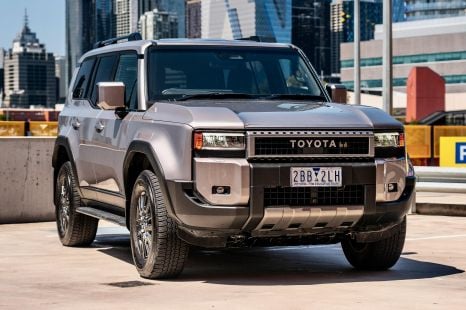

Max Davies
2025 Toyota Prado GXL review
2 Months Ago
Is the current Ford Everest still worth considering, even with a new model waiting in the wings? We put the mid-range Trend to the test to see.

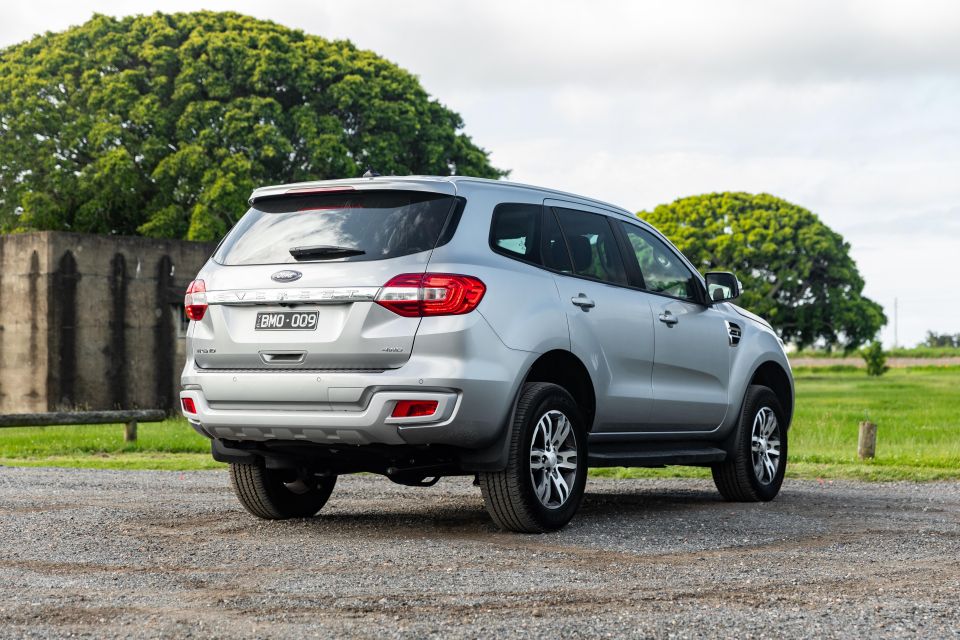

News Editor
New from
$50,090
excl. on-roads

News Editor
New from
$50,090
excl. on-roads


News Editor
New from
$50,090
excl. on-roads

News Editor
New from
$50,090
excl. on-roads
Quickly see how this car stacks up against its competition. Select any benchmark to see more details.
Where expert car reviews meet expert car buying – CarExpert gives you trusted advice, personalised service and real savings on your next new car.
One of the biggest car news stories of the year has surely been the reveal of the next-generation Ford Ranger.
It’s been thoroughly overhauled, and will offer the option of a new turbo-diesel V6 engine, a full-time four-wheel drive system, and a 12.0-inch touchscreen infotainment system.
That means the next-generation Ford Everest, set to be revealed in 2022 ahead of a launch sometime that year, will also be the beneficiary of all these upgrades. The current Everest was derived from the outgoing Ranger, after all.

Toyota may have cause to be worried. Its HiLux is only narrowly beating the Ranger in the sales race, and the top-selling LandCruiser Prado – let alone the oft-forgotten Fortuner – is going to feel the heat from the redesigned Everest. There’s also the recently-redesigned Isuzu MU-X, which is enjoying the number two spot in the Large SUV segment sales race… for now, that is.
Maybe you don’t want to wait, though. You’re in the market for a large, body-on-frame SUV, perhaps because you plan on doing some interstate travel with your caravan now that borders are reopening, or you need a new four-wheel drive for those trips out to the campsite.
With a bolder-looking, more tech-rich and more powerful Everest on the way, is it worth considering the current one?
The Everest range comprises four core trim levels, with the Trend sitting in the middle. It’s available with both the older 3.2-litre five-cylinder turbo-diesel and the newer 2.0-litre bi-turbo diesel, the latter of which can be had with either rear- or four-wheel drive.
Our 2.0-litre four-wheel drive Trend tester is priced at $62,390 before on-road costs, plus $650 for metallic paint. That means it still undercuts a comparably-specified Toyota LandCruiser Prado, but it’s got stiff competition in the shape of the redesigned Isuzu MU-X.
The closest Prado in terms of spec, the GXL, is priced at $67,530 before on-road costs. A range-topping MU-X LS-T is $65,900 before on-roads (and currently $63,990 drive-away), while a flagship Toyota Fortuner Crusade is $62,945 before on-roads and a Mitsubishi Pajero Sport Exceed is just $57,690 list.
Naturally, there are even more affordable body-on-frame SUVs from Korea and China. The absolutely loaded SsangYong Rexton Ultimate is just $54,990 drive-away, while the LDV D90 Executive is $48,990 drive-away.
In this part of the market, then, the Everest is one of the pricier options, if not quite as pricey as the Prado.
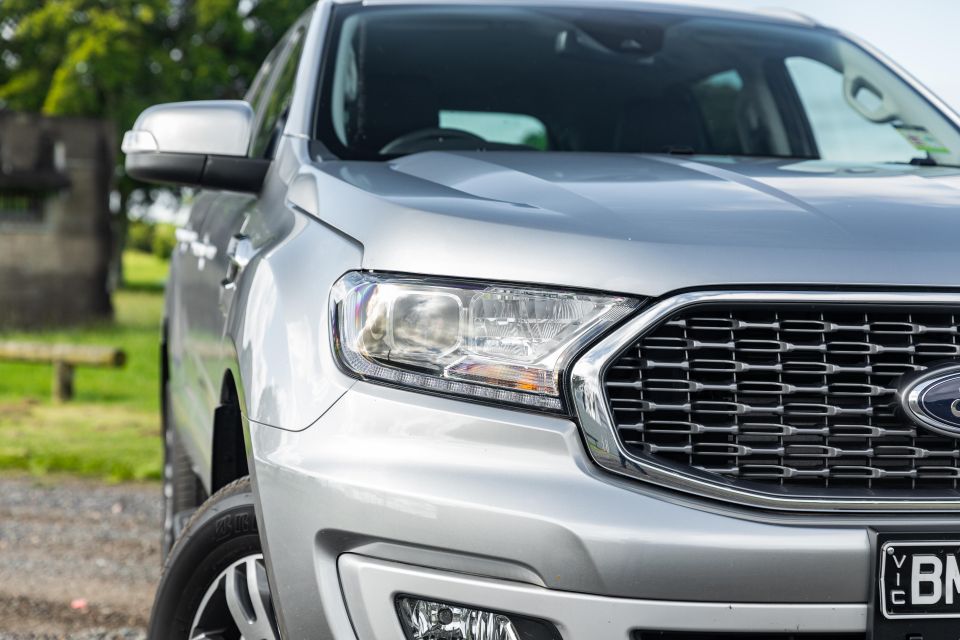

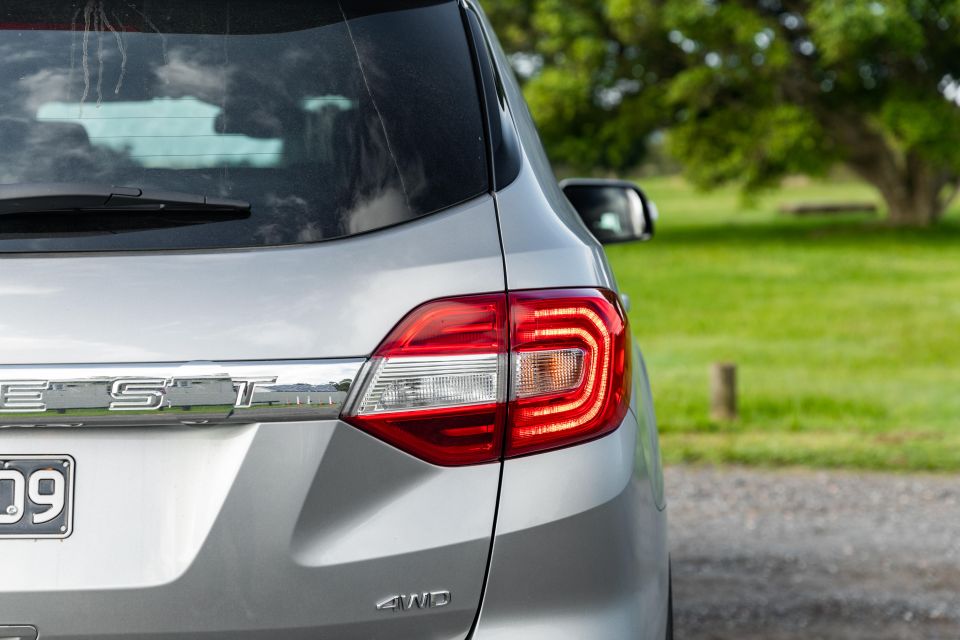

It’s worth flagging right away one feature you don’t get that every single one of those rivals does, and that’s blind-spot monitoring. Likewise, rear cross-traffic alert is missing, and can be found on all those rivals bar the LDV.
If you want these two useful safety features, you have to step up to the Titanium. That’s disappointing, though the Prado and MU-X only got these as standard at this price point earlier this year.
While the Ranger is rather unique in offering semi-autonomous parking assist on most of its up-spec models, at least as an option, it’s also exclusive in the Everest line to the top-spec Titanium.
Everest Trend highlights
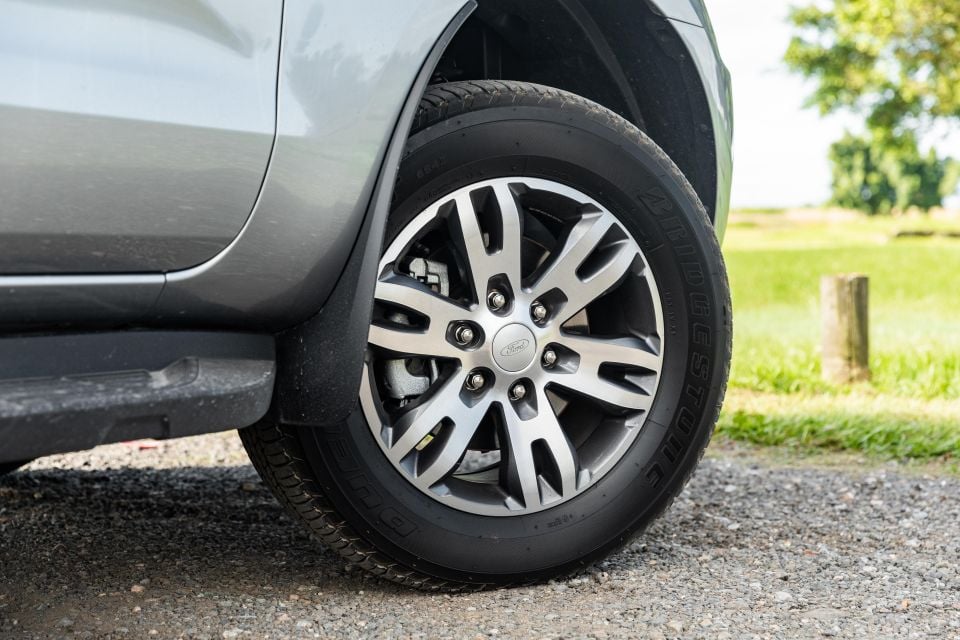
That’s in addition to features found in the base Ambiente, which include:
Interestingly, the combination of cloth upholstery and a manual driver’s seat is a no-cost option.
The Prado GXL lacks front parking sensors but includes a third climate control zone, while the MU-X LS-T includes wireless Apple CarPlay, quilted leather upholstery, heated front seats, and ambient lighting. The Pajero Sport Exceed also includes heated front seats plus a surround-view camera, while the Rexton Ultimate has ventilated front seats, wireless phone charging and a sunroof.
There’s only one option package available on the Everest Trend. This costs $550 and adds a power-folding third-row and a full-size alloy spare.
For those unfamiliar, Ford splits its model years up. For what it calls MY21.75, Ford has dropped the Everest’s CD player, while the Trend’s power tailgate no longer has hands-free functionality. Eagle-eyed readers will notice our tester still has a CD player, which makes it a slightly older car. However, there are no other changes.
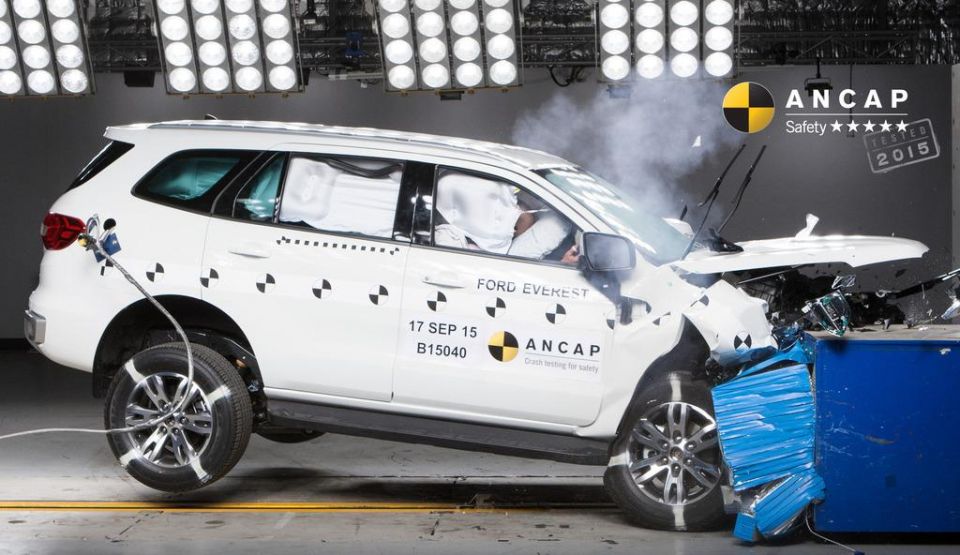
When the Ford Everest was tested by ANCAP in 2015, it received a rating of five stars.
That rating was based on a frontal offset score of 15.38 out of 16 and a side impact score of 16 out of 16. Whiplash and pedestrian protection were rated Good and Acceptable, respectively.
All Everest models come standard with:
In addition to missing out on blind-spot monitoring and rear cross-traffic alert, the AEB system lacks turn assist like you’ll find in an MU-X.
It’s likely the next Everest will have a longer list of standard safety equipment, but for now the MU-X can enjoy its time in the sun as the segment’s active safety champion.
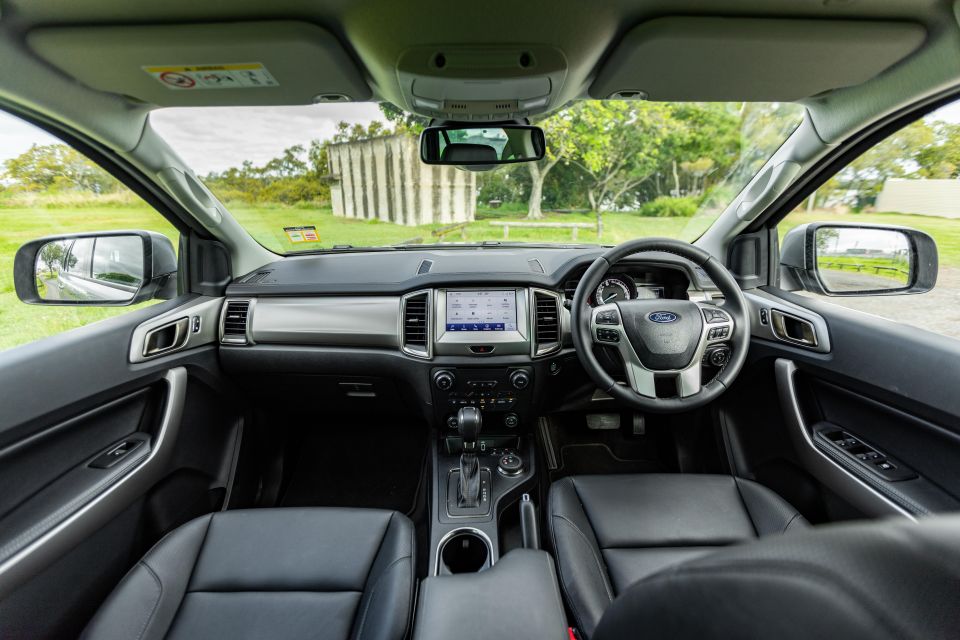
Like a Ranger, basically.
The dashboard, instrument cluster and centre console are identical. Sure, Ford gave the Everest a layer of soft-touch trim across the dash top with stitching details, but it’s the thinnest possible material. There’s the same plasticky, button-heavy dash as the Ranger, though the sea of black is relieved by some contrasting metal-look trim.
In fairness to the Everest, none of its ute-based SUV rivals are particularly inviting inside, with the likes of the Fortuner and Pajero Sport replete with hard (albeit hard-wearing) plastics. In the Everest, this includes everything below the touchscreen, as well as the door cards.
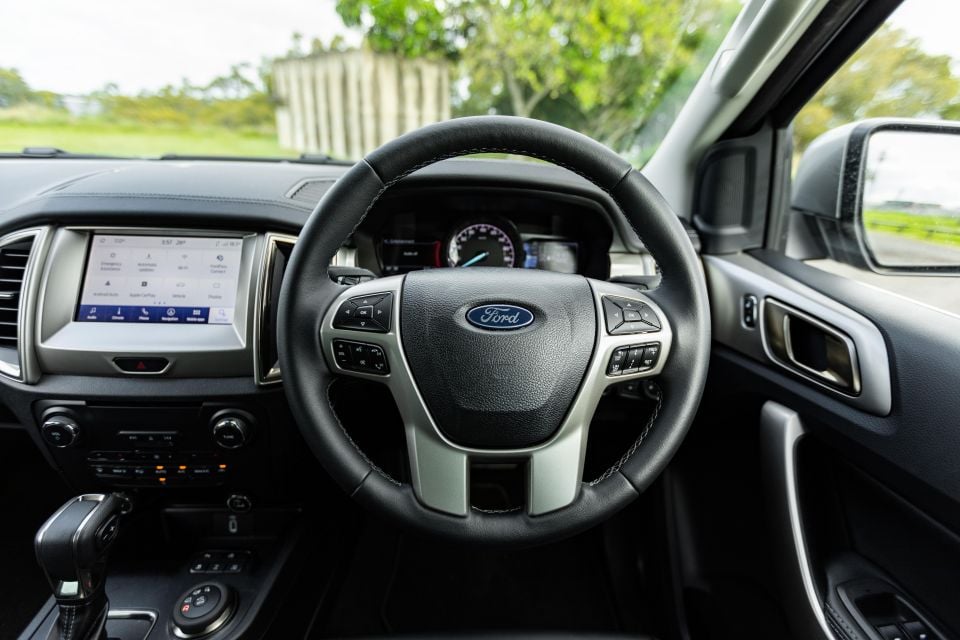

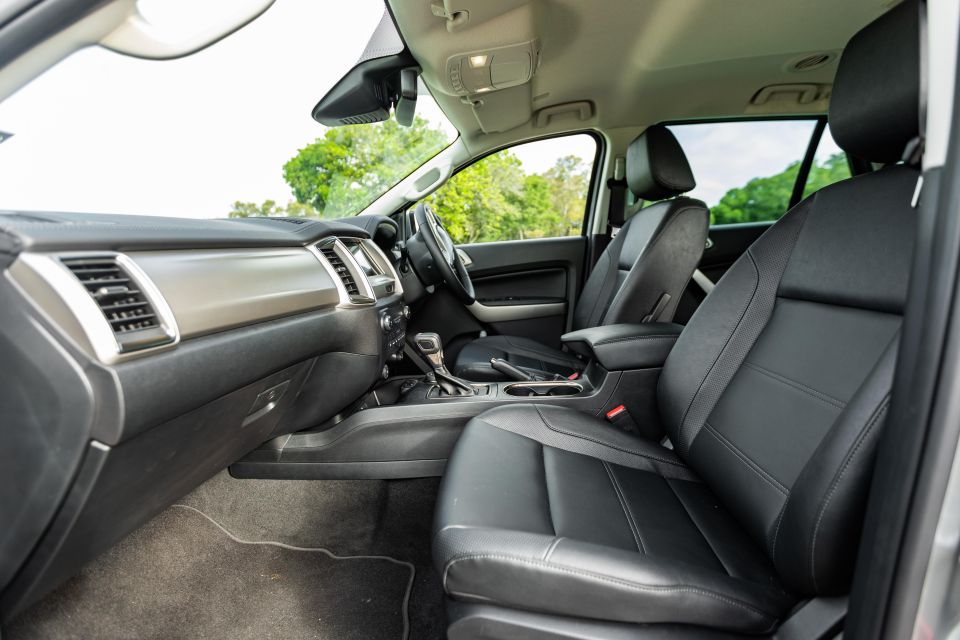
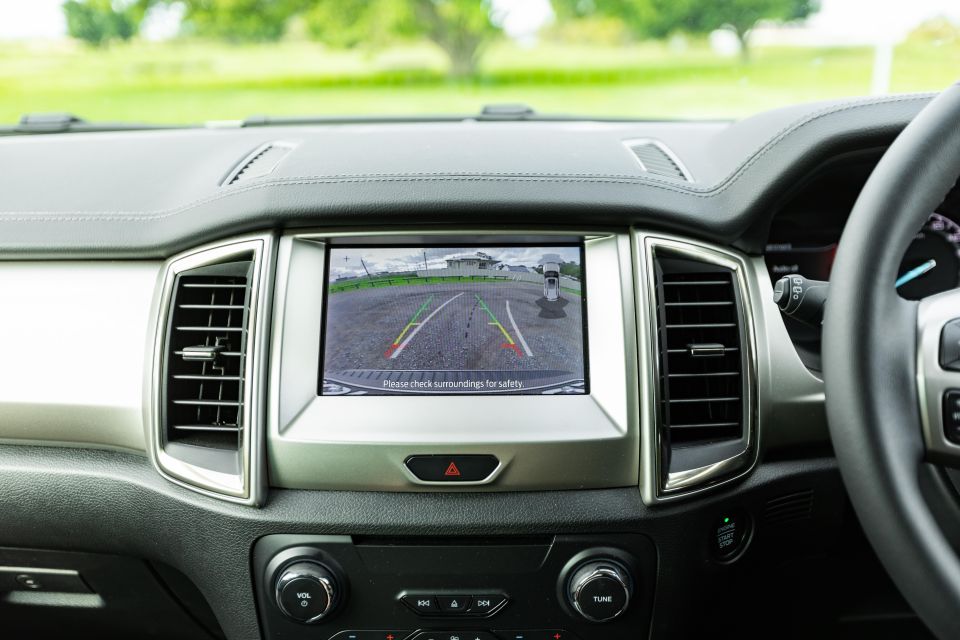
There are also some materials barely tolerable in a circa-$60,000 ute, let alone a circa-$60,000 SUV, like the awful headliner. This cabin isn’t a patch on that of a rival car-based SUV like a Hyundai Santa Fe or Kia Sorento.
These gripes aside, the Everest and Ranger’s essentially identical interiors mean the good points carry over, too. The leather-wrapped steering wheel is chunky and tactile, albeit still lacking reach adjustment, while the instrument cluster – though first having appeared on North American Ford models 10 years ago – still looks good, even if it isn’t the most intuitive set-up.
It consists of a legible analogue dial flanked by two 4.2-inch colour screens, with the left screen displaying either navigation, entertainment or phone information, and the right screen displaying fuel economy and driver assist information and the like. Cleverly, the navigation display will display turn-by-turn driving directions even if you’re using Google Maps.
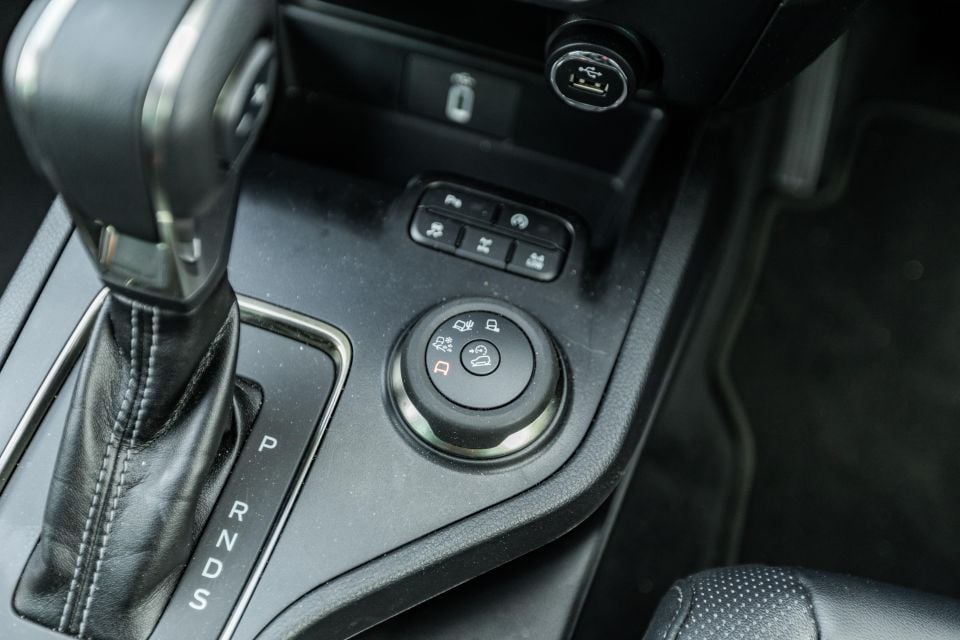
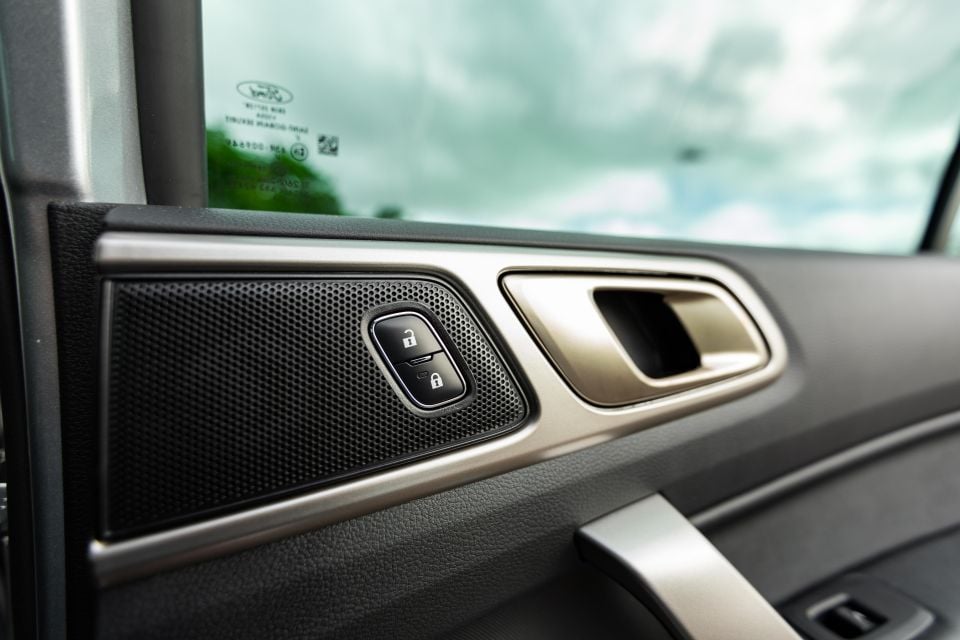
The infotainment system is fundamentally good: it supports updates, it’s easy to navigate, the graphics are inoffensive, and smartphone mirroring takes up the whole screen.
Lack of wireless CarPlay aside, I’d rank it over the MU-X’s system and it’s certainly superior to the likes of the Pajero Sport, Prado and Fortuner in terms of usability and presentation.
The front seats are also quite generously padded and comfortable.
At the base of the centre stack is a small rubberised shelf with a USB-A outlet. At the entrance to this opening, you’ll find another USB-A outlet, plus a 12V outlet. Oddment storage is good, with bottle holders in the doors that can fit a 1L bottle and a spacious centre console bin.
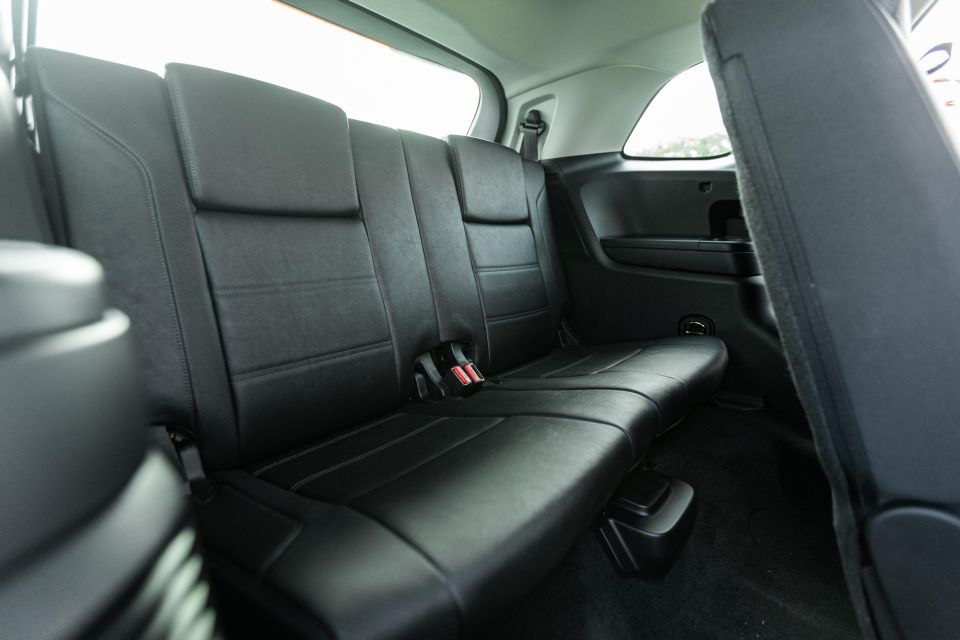
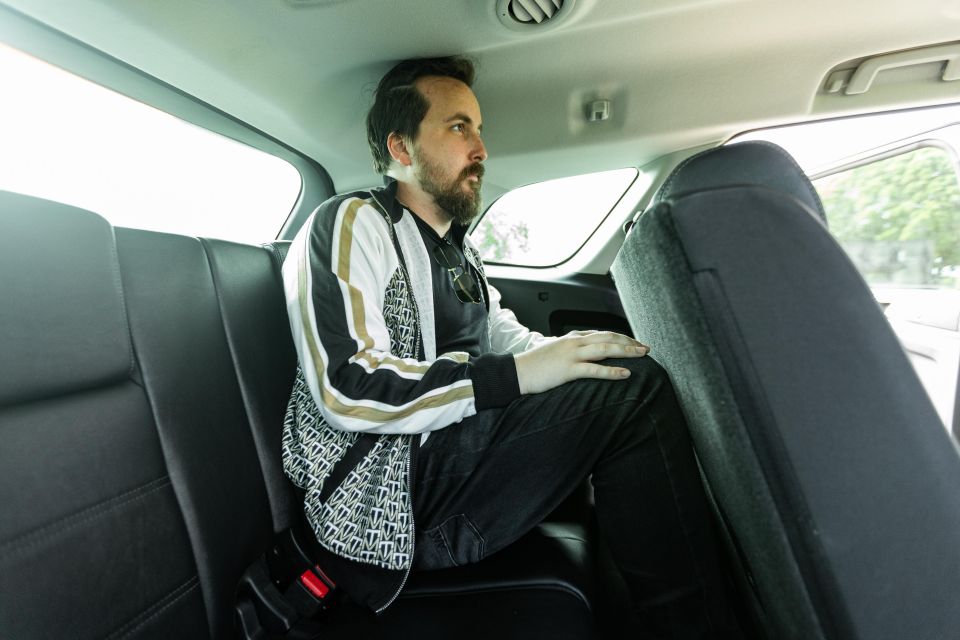

The spacious second row slides to free up legroom for the third row. It’s the third row and boot that disappoint. If you have the third row up, it’s best kept for small kids, while it’ll impinge on your luggage space.
Blame the curvaceous rear of the Everest, which eats into both third-row headroom and overall luggage space. Next time, Ford, it’s okay to just make the Everest look like a box – it’s a large SUV after all. Third-row toe room is decent, however.
There’s ventilation for the second and third rows, with vents in the roof. However, this means the headliner dips down to accommodate these, eating into headroom for the second-row middle-seat occupant.
At least the driveline hump is relatively low, so legroom for that passenger is fine.
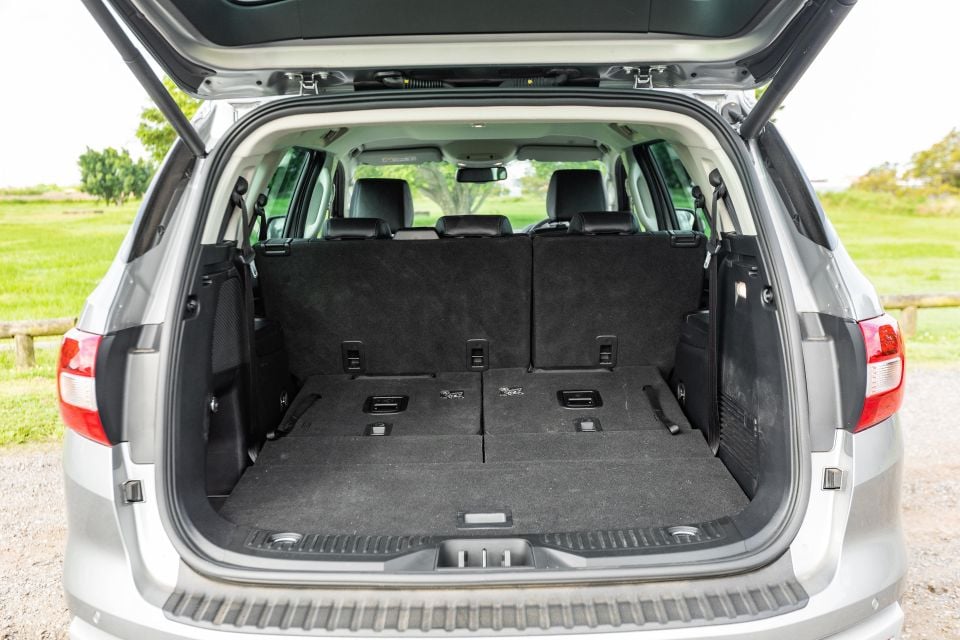
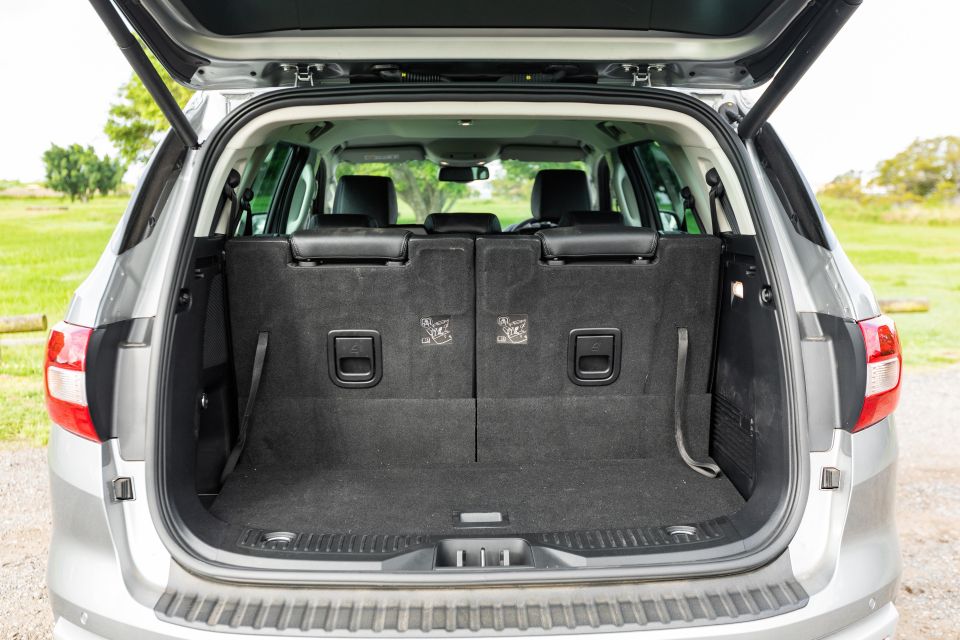
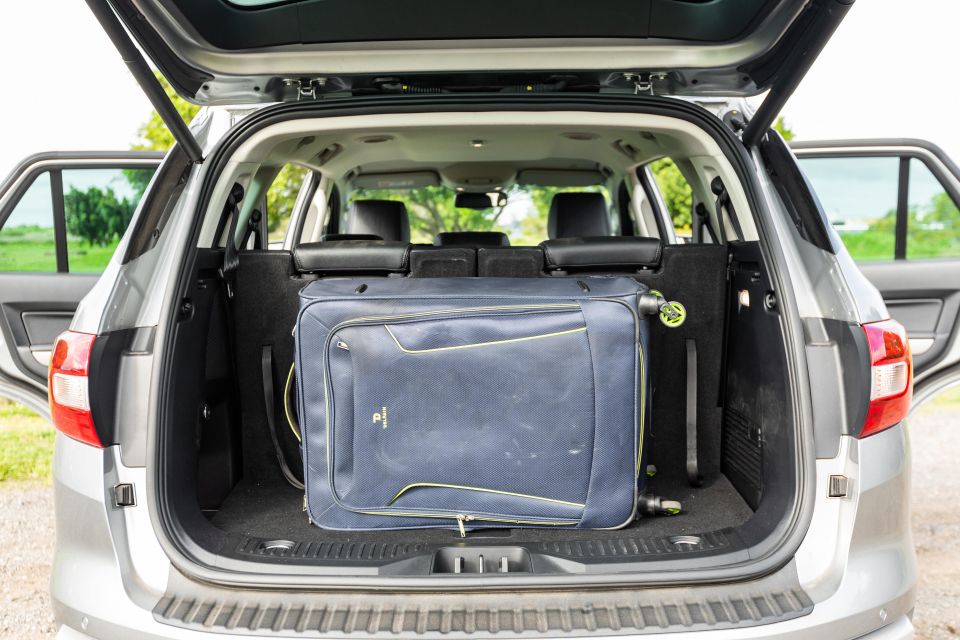
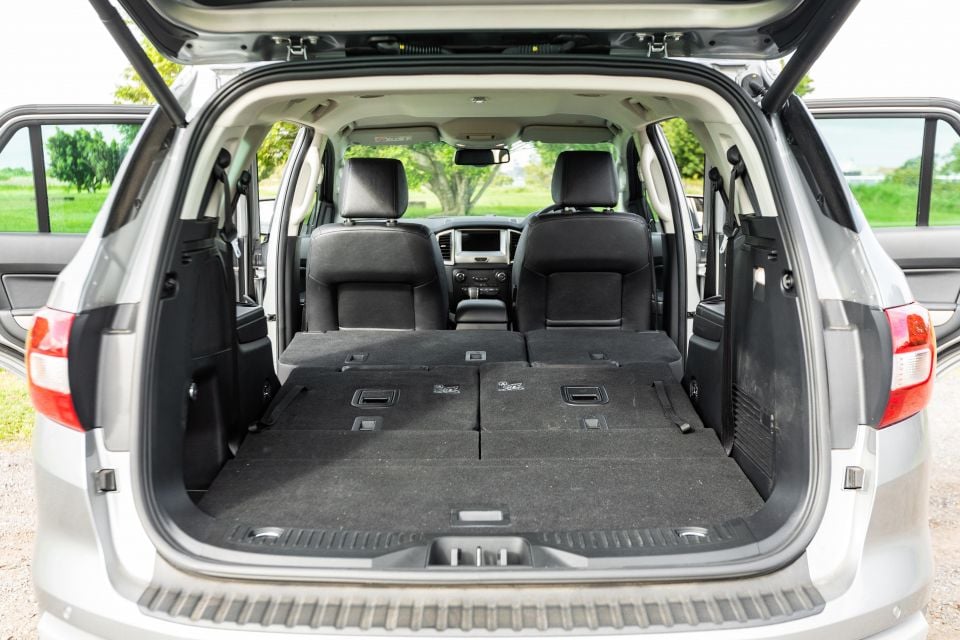
In terms of amenities, there are 12V and 230V outlets in the second-row but no USB outlets. A dial allows you to adjust the fan speed back here but there are no temperature controls.
There are bottle holders in the doors which, like those in the front, can accommodate a 1L bottle, while there are also map pockets on the front seatbacks and cupholders in the fold-down armrest. You can also slide and recline the second-row back rest.
For child seats, there are two ISOFIX anchor points in the second row and five top-tether points across the second and third rows.
Cargo volume behind the third row is 249L. With the third row folded, it expands to 876L and then expands to 1796L with the second row folded. The second and third rows fold completely flat, allowing you to virtually turn your Everest into a Transit. However, the MU-X has the edge in cargo capacity (311L/1119L/2138L).
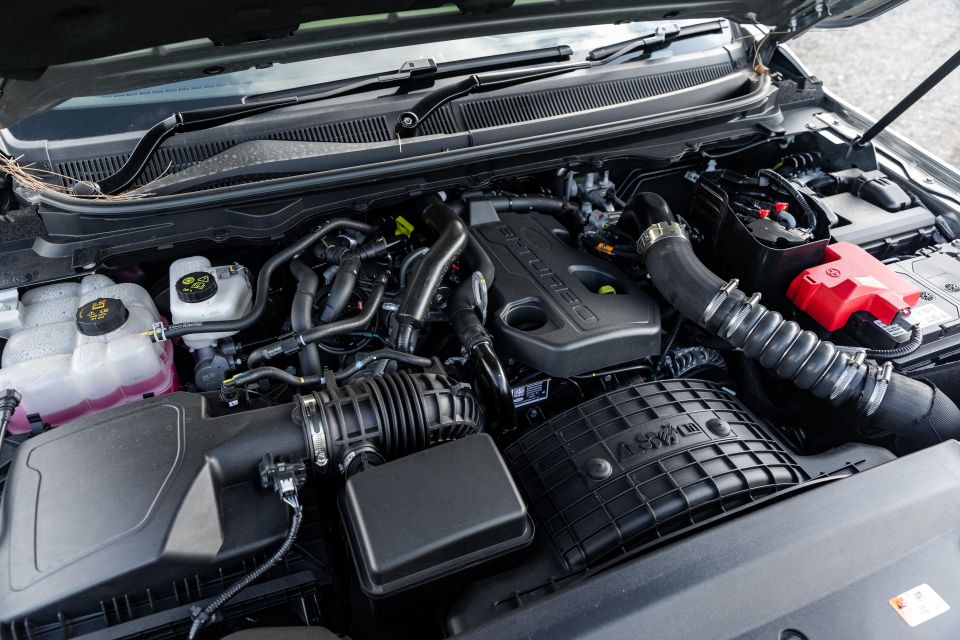
Our tester was equipped with the more powerful 2.0-litre bi-turbo diesel four-cylinder, which produces 157kW of power and 500Nm of torque – 14kW and 30Nm more than the base engine – and is mated with a 10-speed automatic transmission as standard.
Those outputs are at the pointy end of the large body-on-frame SUV segment. The Everest is up 17kW and 50Nm on the MU-X, 7kW on the Prado and Fortuner, and a sizeable 24kW and 70Nm on the Pajero Sport.
Of the budget challengers, a D90 diesel puts out 3kW more power but is down 20Nm, while the Rexton is down 9kW and 59Nm.
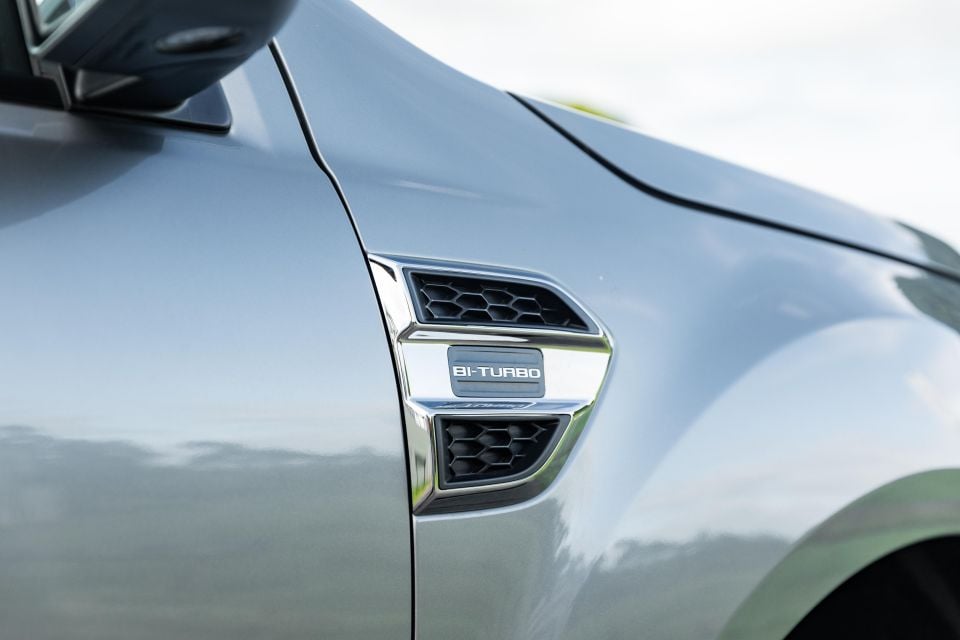
Braked towing capacity is 3100kg, 100kg more than the Prado as well as Everest models with the 3.2-litre five-cylinder engine. It’s also identical to the figure quoted by the Pajero Sport, but 400kg less than the new MU-X and Rexton.
The Everest’s four-wheel drive system features low- and high-range gearing, a locking rear differential and a collection of off-road drive modes.
There’s full-time four-wheel drive mode that you can use on, for example, bitumen in rainy weather or on roads on the way to the snow. This is something you won’t find on the likes of an MU-X.
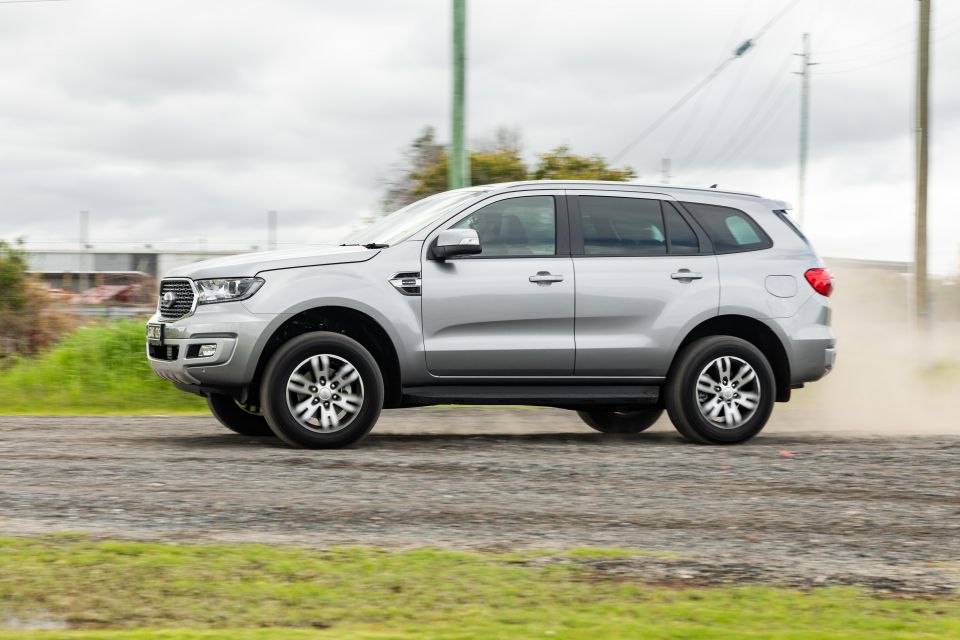
Press the start button and the Everest sounds just like a Ranger. Sure, it’s a little bit quieter, but the sound of the bi-turbo diesel under the bonnet is unmistakable.
As befitting its family SUV positioning, however, the Everest has an extra level of polish. For example, you don’t feel the same level of jolt through the chassis when the automatic stop/start operates at a standstill.
Then there’s the ride. The Everest has this wonderfully cushy, loping ride that, commendably, doesn’t come at the expense of body control.
It manages to feel comfortable without being overly floaty, and only particularly jagged bits of pavement can be felt through the cabin. The Ranger already rides well for a ute, but the ute-based Everest rides well, period.
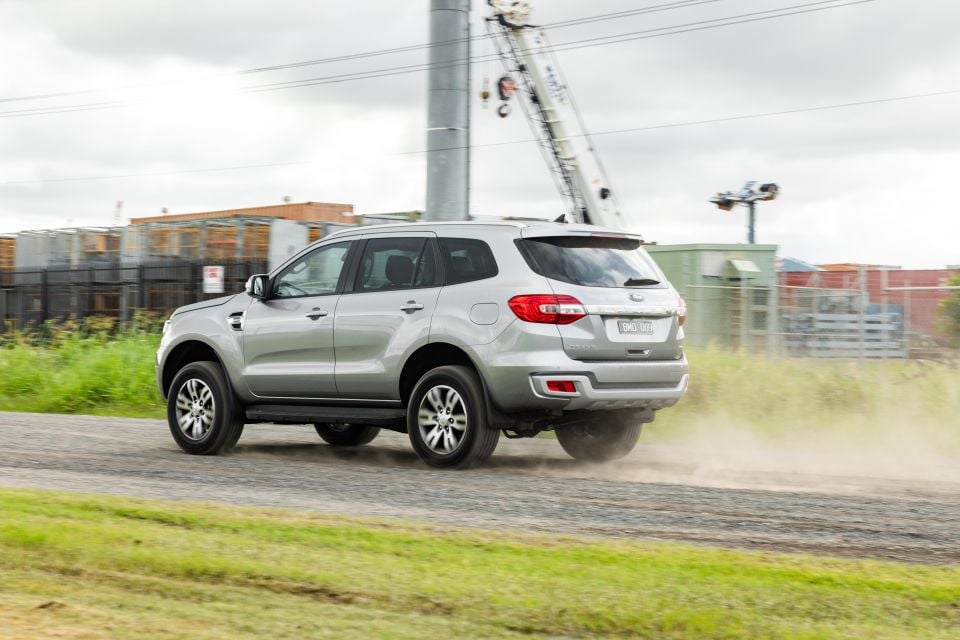
Where expert car reviews meet expert car buying – CarExpert gives you trusted advice, personalised service and real savings on your next new car.
The Everest’s close relation to the Ranger also means the Ranger’s inherent virtues remain. That includes perhaps the most satisfying steering set-up in the class – it’s not as light as an MU-X’s tiller, but its weighting feels just right by me.
The downside is the lane-keep assist isn’t particularly flash, though you can turn that off with a press of a button on the end of the stalk.
This might be a tall, body-on-frame SUV with a soft ride but it manages to corner pretty well. There’s body roll, of course, but it hangs in there pretty well and never feels too top-heavy.
This powertrain has to work harder in the heavier Everest than in the Ranger. The accelerator pedal requires a firm prod to get up and moving on steeper streets, even with only the driver aboard, and the Everest has a habit of shuffling through the gears.
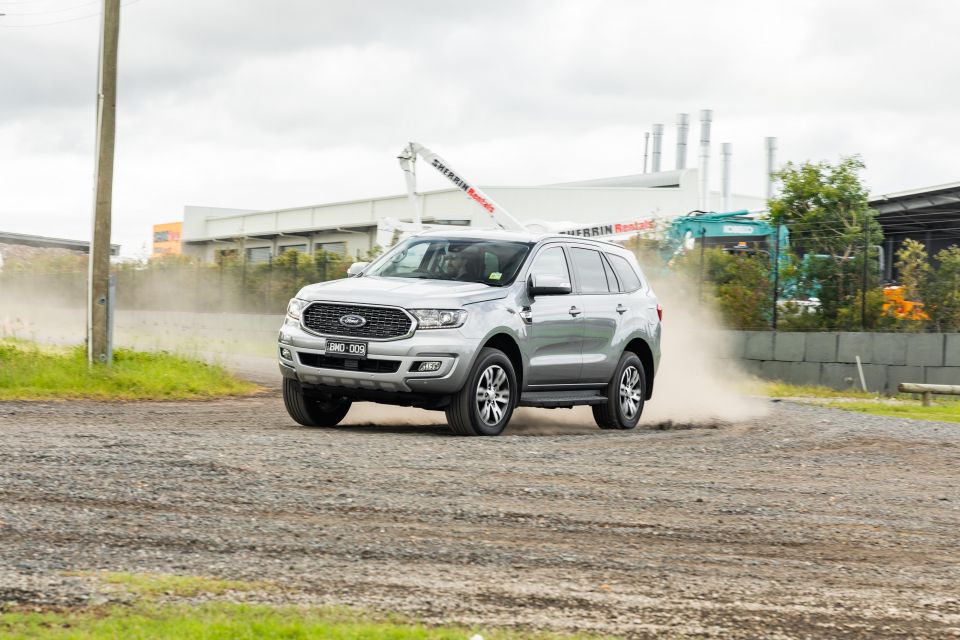
The Trend Bi-Turbo has a power-to-weight ratio of 65kW/tonne, while the less powerful Hyundai Santa Fe Elite diesel has a figure of 77.9kW/tonne. The Everest stacks up better against other body-on-frame SUVs, though, like the Prado GXL (64.5kW/t) and MU-X LS-U (67.6kW/t).
Pick up the pace and, though the engine can sound gruff, noise levels are kept fairly low. On the highway, for example, little in the way of wind or tyre noise intrudes into the cabin.
The Everest feels comfortable and confident at high speeds over unsurfaced roads. While we didn’t venture off-road in our tester, the Everest’s Ranger origins means this offers a good level of off-road ability.
One key advantage the Everest has over the Ranger – not to mention the MU-X – is a full-time four-wheel drive mode you can use on the road.
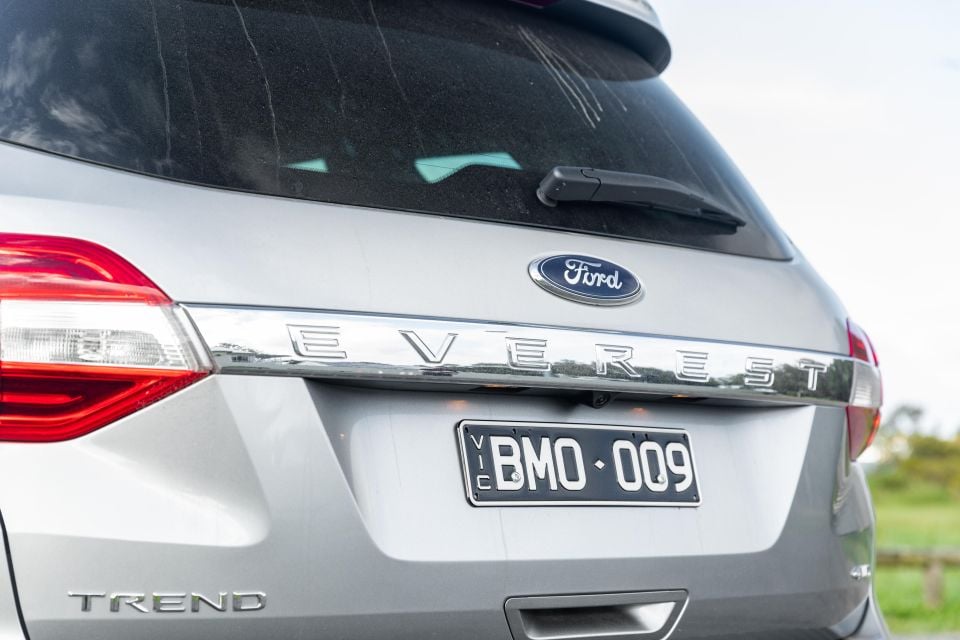
In addition to a five-year, unlimited-kilometre warranty, Ford offers a capped-price servicing program. The first four services are capped at $299, and intervals are 12 months or 15,000km, whichever comes first.
That’s vastly better than a Prado or Fortuner, where each service is cheaper ($260) but must be booked in sooner (six months or 10,000km).
The first four services in a Pajero Sport cost between $399 and $699, though the warranty extends to 10 years or 100,000km if you service within the Mitsubishi network. Even an MU-X, which is offered with seven years of capped-price servicing, costs between $389 and $609 per service in its first four years.
As for fuel consumption, we averaged an indicated 9.5L/100km over a loop comprising a mix of inner-city streets, suburban roads and highways. Over the course of a week with the Everest, this rose to 11.3L/100km. That’s quite a bit higher than Ford’s official combined cycle claim of 7.0L/100km for the 2.0-litre model.
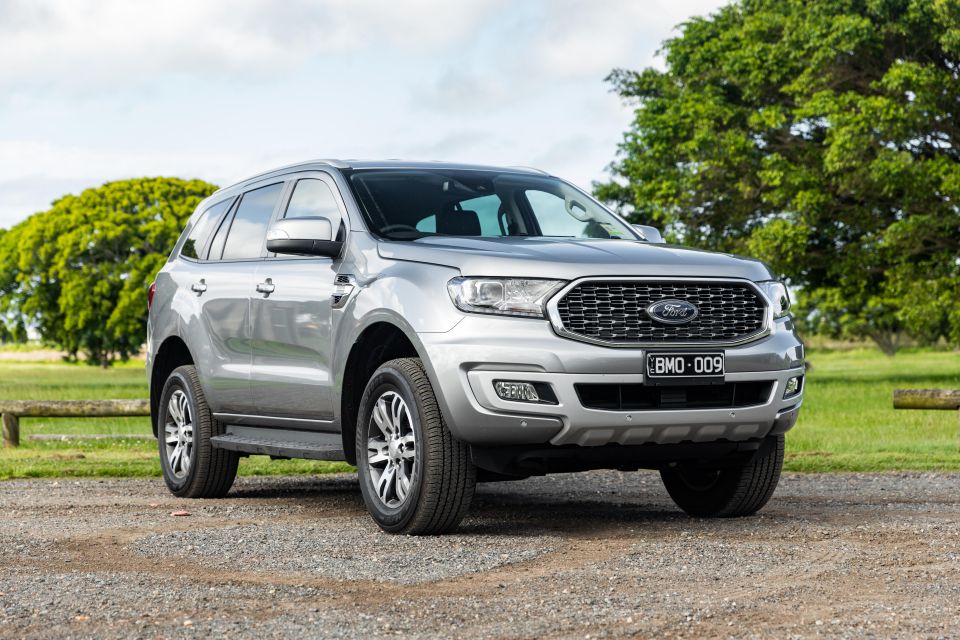
There might be a new one around the corner, but the current Everest is still worth a look.
It’s let down by the omission of key active safety features found on all its rivals, along with a price tag that’s on the higher side of this segment.
The Everest’s class-leading outputs also aren’t as apparent in the real world as they are on paper, while its real-world fuel economy also can’t match the comparative combined cycle figure.
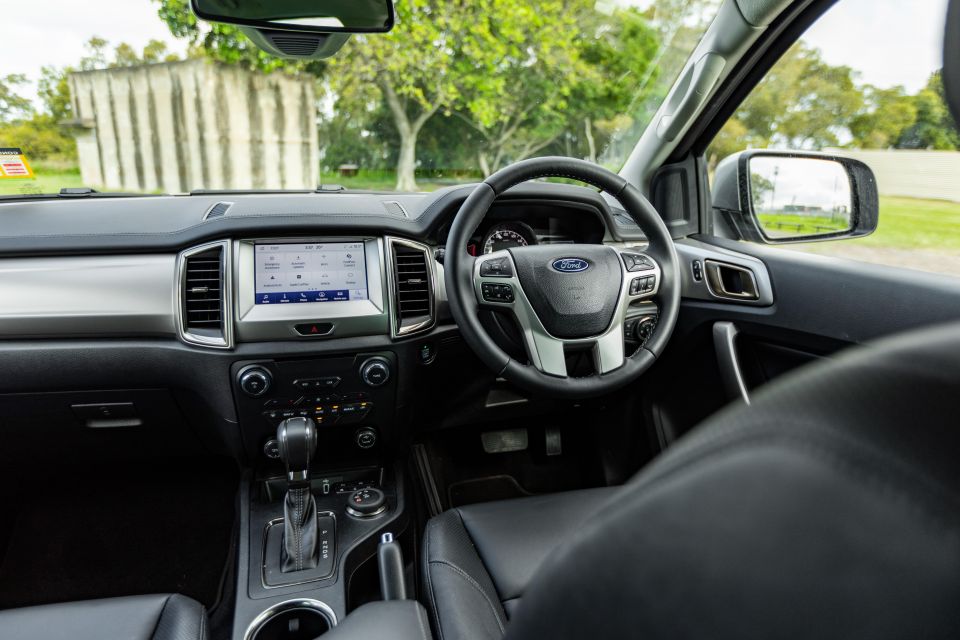
The interior is also far too close to the Ranger’s for our liking and its third row could be more accommodating, though it isn’t the only ute-based SUV in this segment to commit those offences.
In the pros column is a genuinely good dynamic package, with balanced handling, a nice tiller, and a comfortable ride. Throw in affordable servicing and arguably the best infotainment in the segment and there’s plenty of reason to still buy an Everest.
Of course, we can only imagine how much the next one will move the game forward…
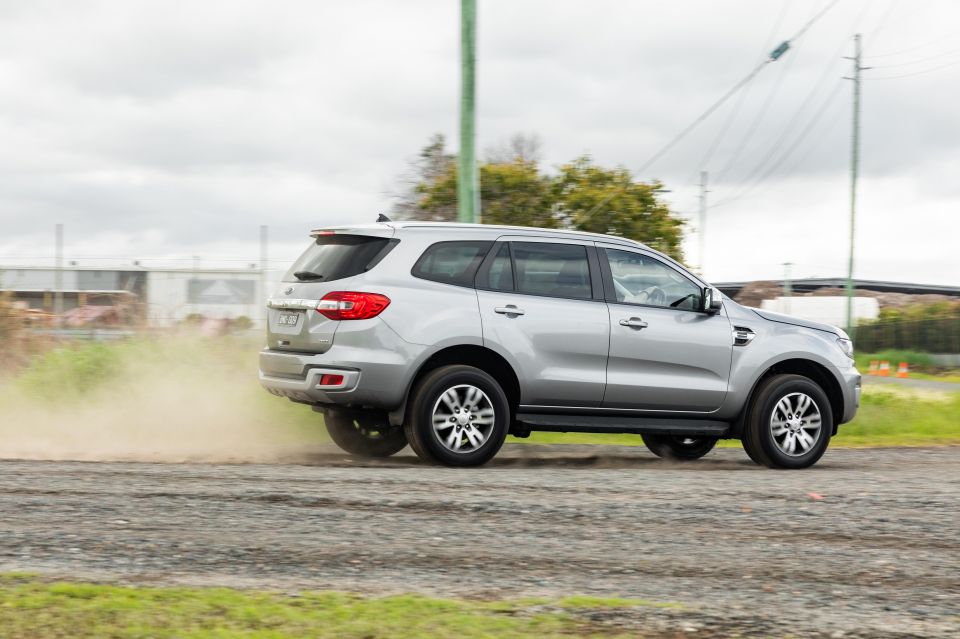
Click the images for the full gallery
MORE: Everything Ford Everest
Where expert car reviews meet expert car buying – CarExpert gives you trusted advice, personalised service and real savings on your next new car.
Discover and compare similar models
William Stopford is an automotive journalist based in Brisbane, Australia. William is a Business/Journalism graduate from the Queensland University of Technology who loves to travel, briefly lived in the US, and has a particular interest in the American car industry.


Max Davies
2 Months Ago


Matt Campbell
1 Month Ago
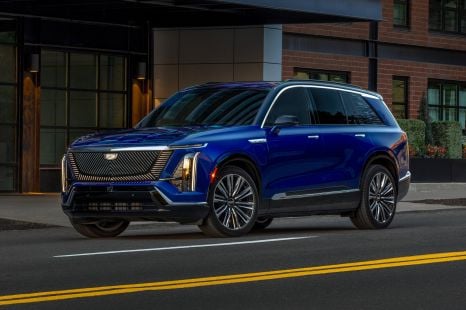

William Stopford
1 Month Ago
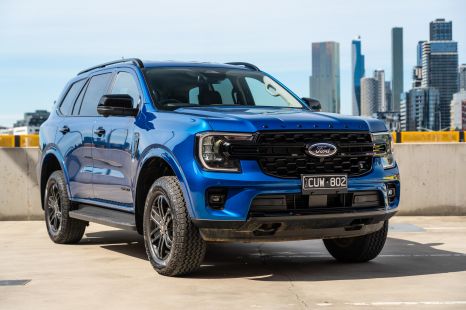

Josh Nevett
1 Month Ago


Max Davies
19 Days Ago


Max Davies
19 Days Ago